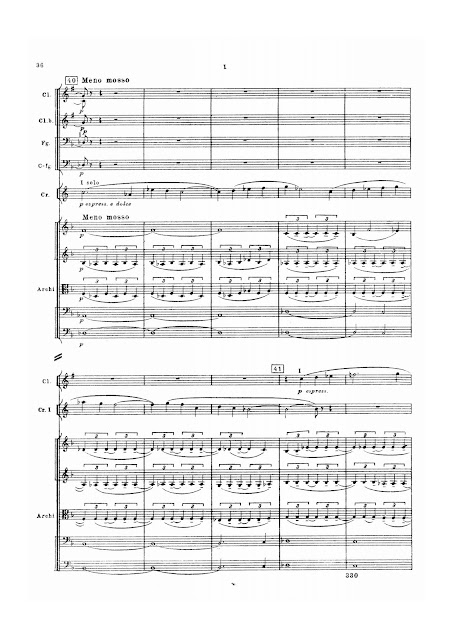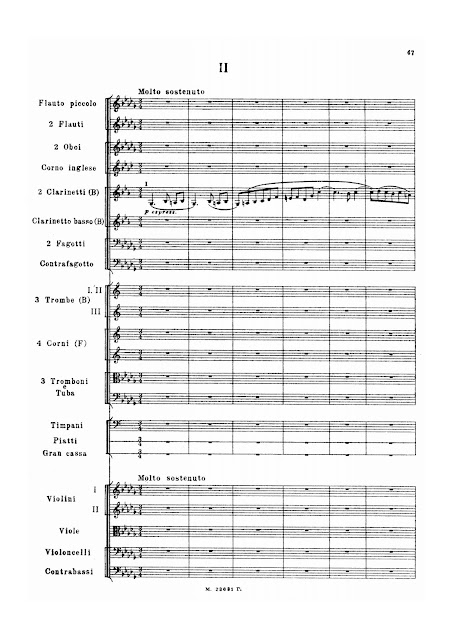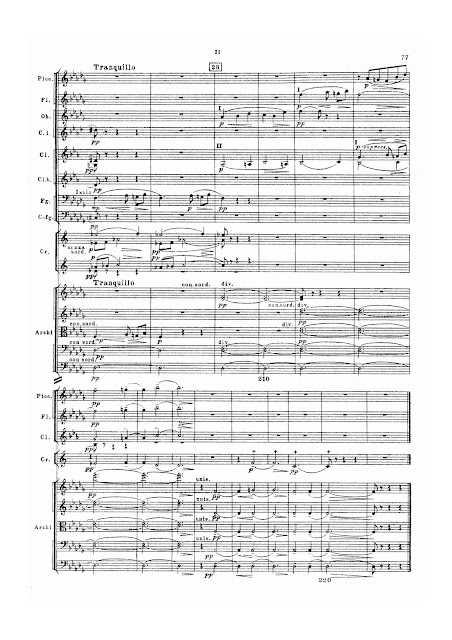CCCLXI. MYASKOVSKY, Nikolai (1881-1950)
It is a shame that Myaskovsky's 27 symphonies are so infrequently performed. I've previously made posts on #2 (CXVI) and #19 (CLIX).
**
This one -- written during the war -- is astonishingly coherent, with typically nuanced "Russian" orchestration. The intensity never subsides, but the music breathes naturally and effortlessly:
First Movement
After a brass fanfare, the theme is stated by bassoons and celli, accompanied by repeated low F's in the basses and timpani:
The theme is taken up and reworked by different combinations -- here with 1/4-note triplets accompaniment:
and combines it with the 8th-note triplet reference from the opening fanfare:
Here the flutes play the theme in sixths, with a solo trumpet providing counterpoint:
A beautiful horn solo, followed by clarinet:
The bassoons restate theme and the movements ends with in a fading F Minor chord in the strings:
Second Movement
Beginning with a lonely clarinet, the texture gradually thickens. The marking molto sostenuto could not be more appropriate -- the entire movement is sustained and melancholy ...
An entirely new section features these sharp 16th-note triplets:
The main theme of the first movement keeps popping up ... in fact, it is omnipresent throughout the entire symphony:
Myaskovsky changes keys frequently -- the harmonic language is always moving towards surprises!
Here, the marking molto patetico indicates the degree to which he wants to emphasize the tragic nature of the music -- written of course during one of the worst periods of the war.
Another key change to end the movement -- to D-flat Major, the submediant.
Third Movement
Myaskovsky was expected to follow his father's footsteps into the military ... and in fact, he did become an engineer, and served in the Red Army. But he had heard Tchaikovsky's Sixth Symphony in his teens, and never really gave up his ambition to be a musician.
The influence of military music is evident here, right off the bat:
A further reworking of the main theme is now accompanied by rugged 16th-notes:
Another lovely horn solo is now accompanied by the 16th-note figures:
Three trombones and tuba. You can't beat that sound!
One of many key changes -- here to B Minor -- about as far away from F Minor as one can get!!
The trumpet gets a solo over the 16th-note figures:
A huge D-Flat diminished chord in third inversion:
The symphony concludes with a descending passage to a soft F Major chord ... perhaps there is hope ...
a note on the brilliance of the Russian school of orchestration:
Notice the placement of the third (A) in the piccolo (sounds an octave lower) and the English Horn with the clarinets and flutes filling in the other intervals:




























No comments:
Post a Comment